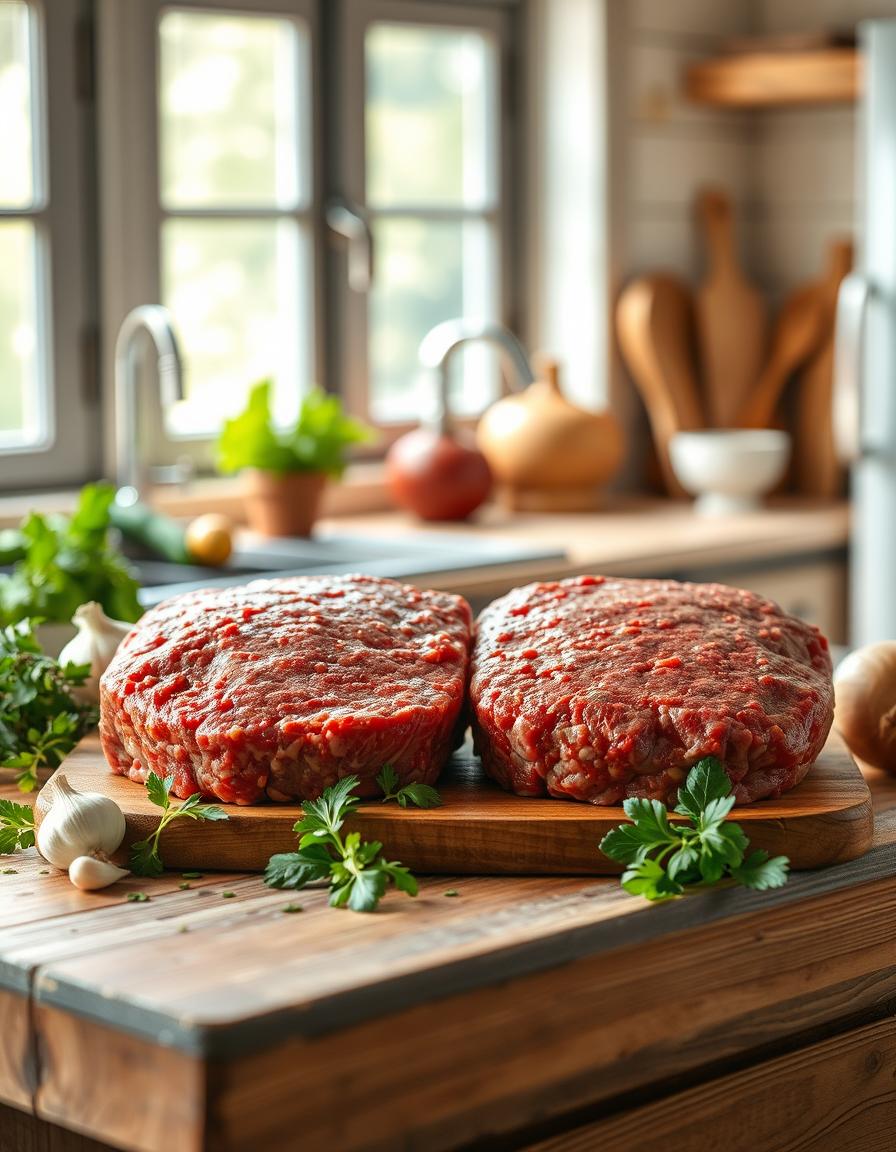Ground beef is a staple in many kitchens because it’s versatile, affordable, and tasty. However, choosing between lean and medium ground beef can be confusing if you’re trying to eat healthier or manage your calorie intake. Understanding the differences in nutrition between these two types is important for making smarter food choices. Whether you’re cooking spaghetti, burgers, or taco meat, knowing what’s packed inside your ground beef can help you balance flavor, health, and your fitness goals.
What Defines Lean and Medium Ground Beef?
Before jumping into the numbers, let’s clarify what lean and medium ground beef actually mean. These labels mostly refer to the fat content within the meat. Lean ground beef usually contains less fat, while medium ground beef has a bit more, which affects taste, texture, and nutrition.
Lean Ground Beef
Lean ground beef is typically labeled as containing 10% fat or less. Common options include 90% lean/10% fat or 93% lean/7% fat. This means that out of 100 grams of meat, there are only about 7 to 10 grams of fat. It is popular among those who want to reduce fat intake without giving up on beef entirely.
Medium Ground Beef
Medium ground beef has a higher fat percentage, usually around 15% to 20%. For example, 80% lean/20% fat is a typical medium ground beef label. The higher fat content adds more juiciness and flavor, but also means more calories.
Lean vs Medium Ground Beef Nutrition: What’s the Difference?
When comparing lean vs medium ground beef nutrition, the main factor to consider is fat content, but protein, calories, and vitamins also play a role. Here’s a basic nutritional comparison based on a 3.5-ounce (100g) cooked serving of each.
| Nutrient | Lean Ground Beef (90% lean) | Medium Ground Beef (80% lean) |
|---|---|---|
| Calories | 176 kcal | 254 kcal |
| Total Fat | 10 g | 20 g |
| Saturated Fat | 4 g | 8 g |
| Protein | 22 g | 19 g |
| Iron | 2.2 mg | 2.0 mg |
| Zinc | 4.5 mg | 4.2 mg |
Calories and Fat
Medium ground beef delivers more calories, mainly because of its higher fat content. Fat has more than double the calories per gram compared to protein or carbs. If you’re watching your calorie intake, lean ground beef helps keep numbers down without sacrificing much protein.
Protein Content
Interestingly, lean ground beef offers a bit more protein per serving. This is great news if you’re trying to build muscle or stay full longer. Leaner meat packs more muscle-building power with fewer calories from fat.
Vitamins and Minerals
Both types provide important nutrients like iron and zinc, which support energy and immune health. The differences here are minor, so you can expect similar benefits either way.
Health Considerations When Choosing Ground Beef
Choosing between lean and medium ground beef depends heavily on your personal health goals and eating habits. Here are some factors to keep in mind:
- Heart Health: Higher saturated fat intake, like from medium ground beef, may impact cholesterol levels negatively in some people.
- Weight Management: Lean beef’s lower calories can help if you’re aiming to lose or maintain weight.
- Cooking and Flavor: Medium ground beef tends to be juicier and more flavorful thanks to its fat content.
- Budget: Sometimes medium ground beef is cheaper, but prices can vary by region and store.
If you want the best of both worlds, many cooks mix lean and medium ground beef to balance taste and nutrition. It’s like having your cake and eating it too—kind of like choosing the right exercise for a full-body boost. Speaking of which, if you want to try a simple yet effective core workout, check out the Trunk Lift Exercise. It’s beginner-friendly and strengthens your back and abs with minimal effort.
Cooking Tips to Maximize Nutrition and Flavor
How you cook ground beef can affect its overall healthiness. Here are some tips to make the most out of your lean or medium ground beef nutrition:
- Drain Excess Fat: After cooking, drain the fat to reduce calories and saturated fat, especially with medium ground beef.
- Avoid Overcooking: Overcooked beef can become dry and lose nutrients.
- Use Spices and Herbs: Enhance flavor with natural seasonings instead of heavy sauces or salt.
- Add Vegetables: Mix in veggies like onions, peppers, or mushrooms to boost fiber and vitamins.
Summary: Lean vs Medium Ground Beef Nutrition
Here’s a quick recap to keep handy when shopping or cooking:
- Lean ground beef: Lower fat and calories, higher protein, better for weight control and heart health.
- Medium ground beef: Higher fat and calories, richer flavor and juiciness, may be preferred for taste.
- Nutrient values: Similar in iron and zinc, important for overall well-being.
- Cooking method: Draining fat and adding veggies can improve the health profile of both.
Conclusion
Choosing between lean and medium ground beef is really about what fits your lifestyle and taste buds best. If you want to cut calories and fat, lean ground beef is the way to go. But if flavor and juiciness are top priorities, medium ground beef might win your heart (and stomach). Remember, even a small change like mixing types or cooking smarter can make your meals healthier without losing that satisfying beefy taste. Just like with physical fitness, balance is key—sometimes you want the extra push, sometimes you want to tone it down. Either way, being informed on lean vs medium ground beef nutrition keeps you in control.

Hardik is the visionary founder and driving force behind Leanry.com, a platform committed to empowering individuals through reliable health information, wellness tips, and actionable content for a healthier lifestyle.

